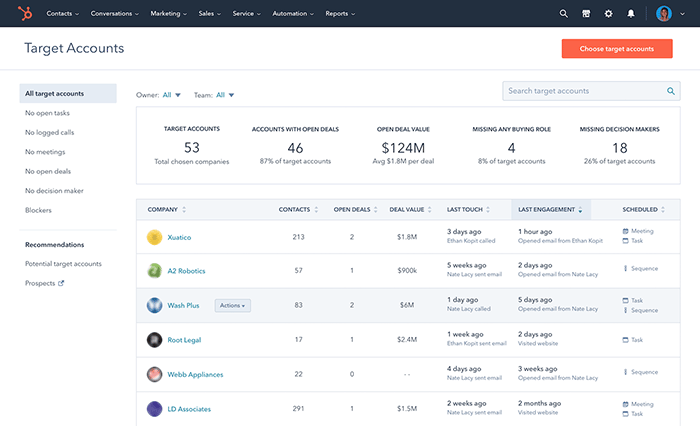What are HubSpot feedback surveys, and what is their purpose?
Find out what HubSpot surveys are, what they are for, the types of surveys you can develop within the CRM and how they bring value to the customer.
2 min read
Por Susana Matamoros | May 24, 2022
Many companies have chosen to implement account-based marketing (ABM). This methodology has given marketing and sales teams the tools to interact and identify which prospects need more attention, promote long-term business growth, delight customers, and increase revenue.
To invest in this methodology, you need to know that it is not achieved with just any technology. It would be best to have software with ABM capabilities, such as HubSpot's CRM, with new target accounts. This blog will explain what target accounts are and how to make the most of their capabilities.
What are HubSpot Target Accounts?
Target Accounts refers to all those companies you have identified as high priority based on their fit with your brand, i.e., how well the company matches your ideal customer profile or Buyer Persona. We recommend identifying what makes an account a high-value "target" for your company to place a Target Account. Analyze some of your most extensive offerings and most successful customers - what do they have in common? The common traits you identify among your target accounts (e.g., industry, company size, annual revenue, location) will give your team and HubSpot a clearer idea of your best-fit target accounts.
You might like to read: One Buyer Persona to rule them all (CX).
Once you have identified these target accounts, we recommend that you assign a Customer Profile Level to them. This custom property will help you classify those accounts into three levels:
By assigning these tiers, you will get an overall picture of how aligned your chosen target accounts are with your strategy.

Having Target accounts and Account Base Marketing will allow you to, among other things:
You may be interested in 10 common problems of not applying Smarketing in your company.
Now that we have seen the benefits of Target Accounts and Account-Based Marketing (ABM) let's see how to make the most of this methodology and improve your marketing strategy with HubSpot.
Let's understand HubSpot's ABM properties:
Using the filters, you will get relevant information more efficiently. Accounts have not been managed: no open tasks, no registered calls, no scheduled or registered meetings, or open business associated with it.
Now that you know more about this HubSpot get together with your team and classify your Target Accounts. Remember, ABM campaigns require seamless collaboration between your sales and marketing teams. Foster that collaboration by leveraging the ABM tools offered by a CRM like HubSpot. Especially with the Target Accounts feature that automates the research process and acts as a central database for all your high-value target accounts, your marketing and sales teams will be able to work together and close deals much more efficiently.

Find out what HubSpot surveys are, what they are for, the types of surveys you can develop within the CRM and how they bring value to the customer.

Find out what HubSpot playbooks are, how to use them and why they are indispensable guides for your company sales teams.

Find out what HubSpot Payments are, how you must use them, and how it helps your business facilitate the customer checkout experience.